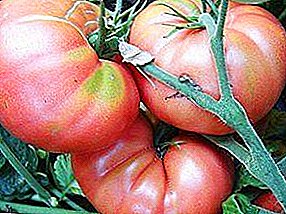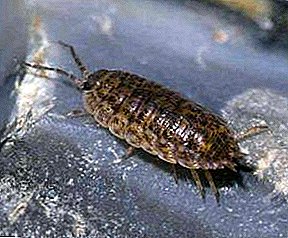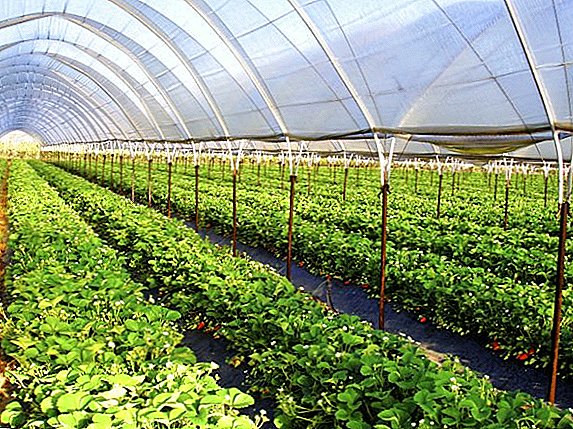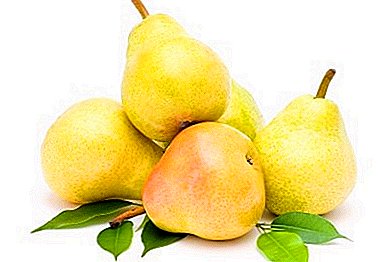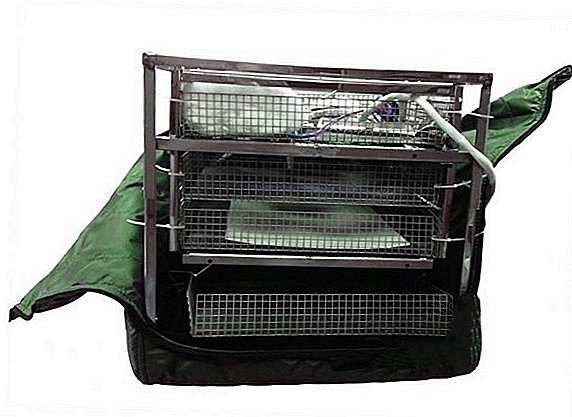 Poultry breeding is handled by both large and small private farms. This activity requires the annual replenishment of the feathered population, for this the device for incubating bird eggs is the best suited. One of these devices is the incubator TGB-280.
Poultry breeding is handled by both large and small private farms. This activity requires the annual replenishment of the feathered population, for this the device for incubating bird eggs is the best suited. One of these devices is the incubator TGB-280.
Let's take a closer look at the characteristics of this device, find out how many chicks the device "incubates" during one incubation.
Description
- The manufacturer of these devices for the incubation of poultry is the Russian company from the Tver region "Electronics for the Village". The operation of this model incubator is designed for five years of active use.
- This home appliance is designed to incubate 280 medium-sized chicken eggs. The device has 4 trays, each of which holds 70 chicken eggs. Goose, duck, swan or ostrich fits much less, and quail eggs or pigeons can accommodate more.
- The TGB-280 works by turning the trays with eggs through 45 °. In this case, the eggs are turned over to a heating lamp with a different angle. Such a turn is programmed in the device every 120 minutes. This feature helps to evenly warm hatching eggs. In previous models, for the rotation of the eggs answered mechanism, driven by a cable. This cable periodically rubbed and torn. In the TGB-280, this part was replaced with a strong metal chain, which made the turning mechanism very reliable.
- Contrast temperature chart - this means that during the first hour inside the incubator the temperature is programmed higher by + 0.8 ° С or + 1.2 ° С than set on the temperature controller's relay. The next 60 minutes the temperature inside the device will be at the same number of degrees lower than that set on the temperature relay. Such a schedule allows you to keep the average temperature inside the incubator exactly the programmed temperature. These temperature fluctuations do not affect the time of incubation of eggs, but significantly improve the ventilation. With an insignificant cooling, the protein and the embryo in it are compressed, and additional space appears in the egg - where the oxygen rushes through the shell. The exact opposite occurs with a slight increase in temperature in the incubator. Increasing as a result of heating the contents of the egg squeezes carbon dioxide through the shell. Such a contrast of temperatures brings the incubation conditions to the natural ones - the hen hen turns and swaps eggs so that they warm up and cool. This is due to the fact that the hen incubates at the same time up to 20 eggs, while some end up in the upper layer of the nest (directly under the hen), and others in the lower one. The hen, heating the masonry with its body, provides them with a temperature of up to + 40 ° C.
- Automatic cooling - the device is programmed to cool eggs for 15 minutes three times a day. This feature is very important for hatching waterfowl.

Did you know? The smallest egg belongs to a hummingbird bird, its size is comparable to the size of a pea. The largest bird's egg in an ostrich.
Specifications
- Turning masonry (automatic) - 8 times in 24 hours.
- Power supply - 220 volts ± 10%.
- Power consumption - 118 Watts ± 5.
- Dimensions assembled (in mm) - 600x600x600.
- Device weight - 10 kg.
- Warranty service - 12 months.
- Expected service life - 5 years.
Production characteristics
In the device 4 mesh (for all-round heating) trays for eggs are provided.
Familiarize yourself with the characteristics of incubators for subsidiary farming "TGB 140", "Сovatutto 24", "Сovatutto 108", "Nest 200", "Egger 264", "Laying", "Ideal Chicken", "Cinderella", "Titan", Blitz. "
The model is intended for incubation:
- 280 pieces of chicken eggs of medium size (70 pieces per tray);
- 140 pieces of goose eggs of medium size (35 pieces per tray);
- 180 pieces of duck eggs of medium size (45 pieces per tray);
- 240-260 pieces of turkey eggs of medium size (60-65 pieces per tray).

Incubator Functionality
- The device can maintain a temperature from 36 ° C to 39.9 ° C.
- It provides a thermometer to measure the temperature inside the incubator with a scale from -40 ° C to + 99.9 ° C.
- Sensors that signal the air temperature are inside the device, their accuracy varies within 0.2 °.
- Different temperature of air inside the incubator in a given mode. This difference is 0.5 ° in both directions.
- Air humidification inside the device from 40 to 85%.
- The exchange of air in the device is carried out using air-exhaust ventilation. Also, 3 impeller fans are working inside the device: two are installed at the bottom of the incubator (in the wetting area), one is at the top of the device.
The "Universal 45", "Universal 55", "Stimul-1000", "Stimul-4000", "Stimul IP-16", "Remil 550TsD", "IFH 1000" are suitable for industrial use.
If in the name of the device there are letter symbols:
- (A) - automated flip trays every 120 minutes.
- (B) - air humidity meters have been added to the configuration.
- (L) - an air ionizer is present (Chizhevsky chandelier).
- (P) - 12 Volt backup power.

Important! Incubators of TGB-280 are good because in case of a long power outage (for 3-12 hours), the device can be connected to a car battery at 12 volts, and thus not allowed to lay eggs laid for incubation.
Advantages and disadvantages
Advantages of the TGB incubator:
Bioacoustic stimulator of hatching - these are sounds (sounding at a certain frequency) imitating those produced by the hen. The device starts to emit these sounds closer to the end of the incubation than it stimulates the nestling of the eggshells from the inside. Such bioacoustics increases the percentage of hatchability of the young birds.
Disadvantages of the TGB incubator:
- A lot of weight - the device is fully assembled (with trays, fans, thermometers, thermostat and a device for laying masonry) weighs just over ten kilograms. When eggs are laid in the incubator, it becomes completely unaffordable for one person.
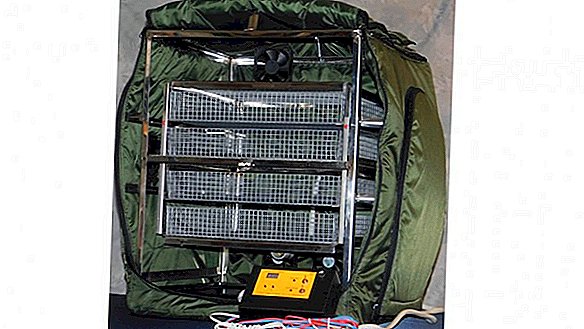
- The lack of a window to monitor what is happening inside the incubator makes life much harder for the poultry farmer. When approaching the time of hatching chicks, a person must control the situation inside the incubator, and with the device of this design it is necessary to unzip each time, which holds the fabric case together. Opening the incubator case too often can cause the temperature inside the device to cool.
- The complexity of caring for the body - the original device of the fabric body made it possible to slightly ease the weight of the device due to the wall thickness. But it is not easy to care for the cover; sometimes after hatching of chickens, dried liquid remains on the inner walls of the incubator, pieces of the shell - all this could be easily removed with the help of a hand wash, if not for one circumstance. The heating element of this incubator is a fabric case, inside which a flexible heating wire is sewn and it is undesirable to wash it with water.

- There is a flaw in the egg trays - since all the eggs are of different sizes (some are larger, others are smaller), then they are not tightly fixed to the wire tray, and they roll and collide with each other at an angle of 45 ° when turning the tray. If the poultry farmer does not bother to move the eggs into pieces of soft material between themselves (foam rubber, cotton wool), then most of the eggs will be damaged by the shell during a coup (broken).
- The presence of a zipper on the fabric case - the zipper is a very unreliable device and after a certain number of openings and closures tends to break. Developers would be more expedient to provide for the case of an incubator on the case of dense Velcro.
- The sharp edges of the iron core - for some reason, the manufacturer has not provided security for the user from contact with sharp surfaces.
- High price - among other incubators with similar characteristics, the TGB incubator has a high cost. This cost exceeds analog devices by 10-15 times. In this regard, it is not very clear when this unit will pay for its cost and make a profit.

In addition to the above features, this device is no different from other incubators. In each of them there is a temperature and humidity regulator, the main thing for the poultry farmer is to adhere to the temperature schedule of incubation, and then the device will “see” healthy and active chicks.
Important! The iron structure of this incubator has quite sharp cutting edges. Therefore, in places of the most frequent contact of sharp surfaces with hands, it is desirable to process the iron edges with a file or wrap them with heat-resistant insulating material.
Instructions for the use of equipment
Consumer actions:
- Incubator assembly according to the attached instruction manual.
- Determination of the future location of the device.
- The distribution of eggs in trays.
- Filling water tank.
- Check the tightness of the case.
- The inclusion of the appliance in the network.
- After heating the device to the desired temperature - bookmark the filled trays for incubation.
- Exact adherence to the incubation mode specified in the instructions (temperature by day and time of incubation) for a particular type of bird.
Video: TGB Incubator Assembly
Preparing the incubator for work
Determine the installation location of the incubator:
- Install the device in a room where the air temperature is maintained within + 20 ° C ... + 25 ° C.
- If the air temperature in the room drops below + 15 ° C or rises above + 35 ° C, then the room is absolutely unsuitable for an incubator.
- In no case should direct sunlight fall on the device (this will cause the temperature inside the device to fluctuate), so if there are windows in the room, it is better to curtain them.
- Do not install the device near a radiator, gas heater or electric heater.
- The incubator should not stand next to open doors or windows.
- The room should have good ventilation due to ventilation openings under the ceiling.

Did you know? According to National Geographic, scientists have finally resolved an old argument: what is primary, the chicken or the egg? Reptiles laid eggs for thousands of years before the advent of chickens. The first chicken was born out of an egg, carried by a creature that was not exactly a chicken. Therefore, the chicken egg in its appearance is primary.We assemble the device
Based on the instructions supplied with the devices, the user must assemble the incubator. When the assembly is finished, you need to turn on the toggle switch located in the bottom corner of the frame (left) and wait until the camera changes its position to horizontal. Now the device is ready for laying eggs.

Egg laying
- Before starting the laying of eggs on the mesh tray for incubation - install the tray itself with the short side vertically, so that it can additionally lean on something.
- Eggs lay the blunt side down.
- When filling trays, already laid bird testicles stick with their left hand, and continue to fill the tray with their right hand.
- If, as a result of filling, the distance between the last egg in the row and the metal side of the tray remains, then it should be filled with a soft material (foam strip).
- If the eggs are small and there is an empty space, then you need to install the limiter attached to the device. Due to the protrusions of wire at the ends of such a partition, the stop is tightly fixed to the rim flanges. If the partition is installed not close to the egg rows, then the empty space is also filled with a soft seal (foam rubber or other materials).
- If there are few eggs, then in order to maintain balance when turning, the trays should be installed as follows: if the tabs are enough for only two trays, then one of them is placed at the top and the second at the bottom of the incubator.
- One or three filled trays can be installed in any order.
- If the tray is not completely full, its contents should be located in the front or rear, but not on either side.
- If there are less than 280 eggs, then they can be evenly spread on all four trays. It is desirable to give them a horizontal position with the help of soft pads.
Video: laying quail eggs in an incubator TBG 280
Did you know? For thousands of years, domesticated pigeons have been used to deliver messages, such as important military information or the results of the ancient Olympic Games. Although the pigeon mail eventually lost its popularity, it was actively used during World War II to carry important and secret messages.
Incubation
Before incubation:
- It is necessary to pour warm clean water into the tank.
- After that, the incubator is included in the network.
- Wait until the device has reached the desired temperature.
- Place filled trays in the device.
- Close the device and start the incubation.
- In the future, the poultry farmer needs to monitor the readings of the devices for temperature and humidity.

In the process:
- If we are talking about the TGB incubator model, which does not provide for automatic rotation of the clutch, the poultry farmer needs to turn the eggs twice a day (in the morning and in the evening) with the help of the existing lever.
- After 10 days of incubation, the water tank is lightly covered with an isolon mat.
- By manual rotation, the clutch no longer turns over, and large eggs (goose, ostrich) twice a day are cooled with water irrigation.
One to two days before hatching:
- It is necessary to remove the isolon mat from the water tank.
- Check eggs with an ovoscope and remove those in which the embryo has not developed.
- Prepare a warm box in which hatched chicks will be transplanted.
Did you know? The usual phrase about a person who eats little, "bites like a bird" - should have a completely opposite meaning. Many birds eat food every day that is twice their own weight. In fact, the bird - very voracious creature.

Hatching chicks
- When the shell starts to peck, the poultry farmer needs to be close to the incubator and periodically (once every 20-30 minutes) look inside the device.
- Hatching chicks should be moved to a dry and warm box (located under the lamp for heating).
- Chicks who are prevented from getting out of the wild are too hard to shell, can help the poultry farmer, breaking the interfering shells. After that, the newborn bird is also placed in a box with the rest of the chicks so that it dries and warms up.
Learn more about how to overstock eggs, how to disinfect an incubator, disinfect eggs before incubation, how to care for chickens after an incubator.
Device price
- You can buy the TGB-280 incubator in specialized stores in big cities or order it from an online store. In online stores are provided (at the request of the buyer): the shipment of goods by cash on delivery or its payment by bank transfer.
- The price of this device in 2018 in Ukraine ranges from 17,000 hryvnia to 19,000 hryvnia, or from 600 to 800 US dollars.
- In Russia, this model of incubator can be bought for a price starting from 23,000 rubles, as well as for 420-500 US dollars.

The price of these incubators may vary depending on the configuration. In the Russian Federation, these incubators are cheaper than in Ukraine. This is explained by the fact that they are produced by a Russian manufacturer, which means that the price does not include long-distance transportation costs and customs duties.
Did you know? The bird's eye occupies about 50% of the bird's head, human eyes occupy about 5% of the head. If we compare the eyes of a man with a bird, then the human eye should have been the size of a baseball.
findings
Given all the above, we can conclude that the TGB incubator is a good device for breeding poultry in large quantities, but still has some drawbacks. One of its main drawbacks is the high price. There are a lot of much cheaper incubators on sale (“The hen”, “Ryabushka”, “Teplusha”, “Utos” and others), their price is ten times lower, they work no worse.
Poultry breeding is a very interesting and profitable occupation. By purchasing such a useful device as a home incubator, the poultry farmer provides himself with a reliable helper for many years to “hatch” the chicks. Before buying an incubator, it is important to weigh all the positive and negative sides of the chosen model.
Video review of the incubator TGB 280
Comments on the operation of "TGB 280"
GOOD LUCK TO ALL SUCCESSES YOU IN INCUBATION









